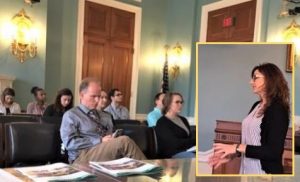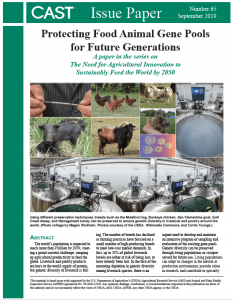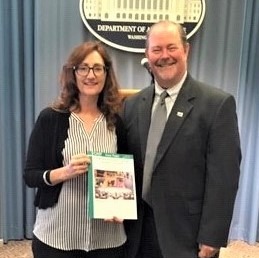 While genetic selection strategies around the world have improved livestock productivity and consistency, a lack of genetic diversity could put food production at risk, according to a new report from CAST. The publication’s task force chair, Dr. Julie Long, presented major highlights from the paper–Protecting Food Animal Gene Pools for Future Generations–September 30 at three Washington, D.C., events.
While genetic selection strategies around the world have improved livestock productivity and consistency, a lack of genetic diversity could put food production at risk, according to a new report from CAST. The publication’s task force chair, Dr. Julie Long, presented major highlights from the paper–Protecting Food Animal Gene Pools for Future Generations–September 30 at three Washington, D.C., events.
 The world’s population is expected to reach more than 9 billion by 2050, creating a grand societal challenge: ramping up agricultural productivity to feed the globe. Livestock and poultry products are keys to the world supply of protein, but genetic diversity of livestock is fading. The number of breeds has declined as farming practices have focused on a narrow number of high-producing breeds to meet low-cost market demands. In fact, up to 30% of global livestock breeds are currently at risk and, if lost, cannot be replaced.
The world’s population is expected to reach more than 9 billion by 2050, creating a grand societal challenge: ramping up agricultural productivity to feed the globe. Livestock and poultry products are keys to the world supply of protein, but genetic diversity of livestock is fading. The number of breeds has declined as farming practices have focused on a narrow number of high-producing breeds to meet low-cost market demands. In fact, up to 30% of global livestock breeds are currently at risk and, if lost, cannot be replaced.
In the face of the mounting depletion in genetic diversity among livestock species, there is an urgent need to develop and maintain an intensive program of sampling and evaluation of the existing gene pools. Genetic diversity can be preserved through living populations or cryopreserved for future use. Living populations can adapt to changes in the natural or production environment, provide value in research, and contribute to specialty markets. Cryopreservation offers rare and major breeds a benefit—whether to reconstitute lost bloodlines or to serve as a safety net in case of catastrophic loss of a diminished population. This paper addresses several important challenges regarding the effective protection of remaining genetic diversity.
 Julie Long–a USDA Agricultural Research Service scientist pictured at right with Dr. Scott Hutchins, USDA Undersecretary for Research, Education, and Economics–said the main purpose of this report is to “bring awareness” to the subject. CAST EVP Kent Schescke said key takeaways from the paper include: (1) access, prioritize, and protect populations most at risk, (2) improve cryopreservation technology, (3) expand and connect databases, and (4) develop public-private partnerships that include rare breed associations, universities, government agencies, and NGOs.
Julie Long–a USDA Agricultural Research Service scientist pictured at right with Dr. Scott Hutchins, USDA Undersecretary for Research, Education, and Economics–said the main purpose of this report is to “bring awareness” to the subject. CAST EVP Kent Schescke said key takeaways from the paper include: (1) access, prioritize, and protect populations most at risk, (2) improve cryopreservation technology, (3) expand and connect databases, and (4) develop public-private partnerships that include rare breed associations, universities, government agencies, and NGOs.
Task Force Authors
Dr. Julie Long, Chair, Animal Biosciences & Biotechnology Laboratory, U.S. Department of Agriculture—Agricultural Research Service
Dr. Harvey Blackburn, National Animal Germplasm Program, U.S. Department of Agriculture—Agricultural Research Service
Dr. Alison Martin, The Livestock Conservancy
Dr. Robert L. Taylor, Jr., Division of Animal and Nutritional Sciences, West Virginia University
Dr. Fred Silversides
Dr. Curtis R. Youngs, Department of Animal Science, Iowa State University
Contact Information
Dr. Julie Long
Animal Biosciences & Biotechnology Laboratory, U.S. Department of Agriculture, Agricultural Research Service, julie.long@ars.usda.gov
Kent Schescke
CAST Executive Vice President
(515) 292-2125, kschescke@cast-science.org
The paper, Protecting Food Animal Gene Pools for Future Generations—A paper in the series on The Need for Agricultural Innovation to Sustainably Feed the World by 2050, is available for free download on CAST’s website .
Your donation to CAST helps support the CAST mission of communicating science to meet the challenge of producing enough food, fiber and fuel for a growing population. Every gift, no matter the size, is appreciated.